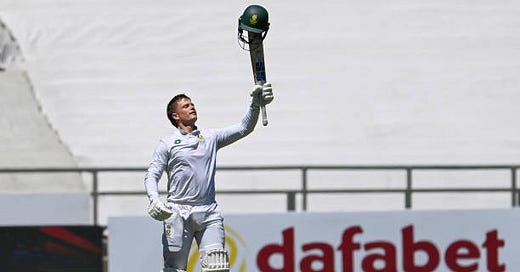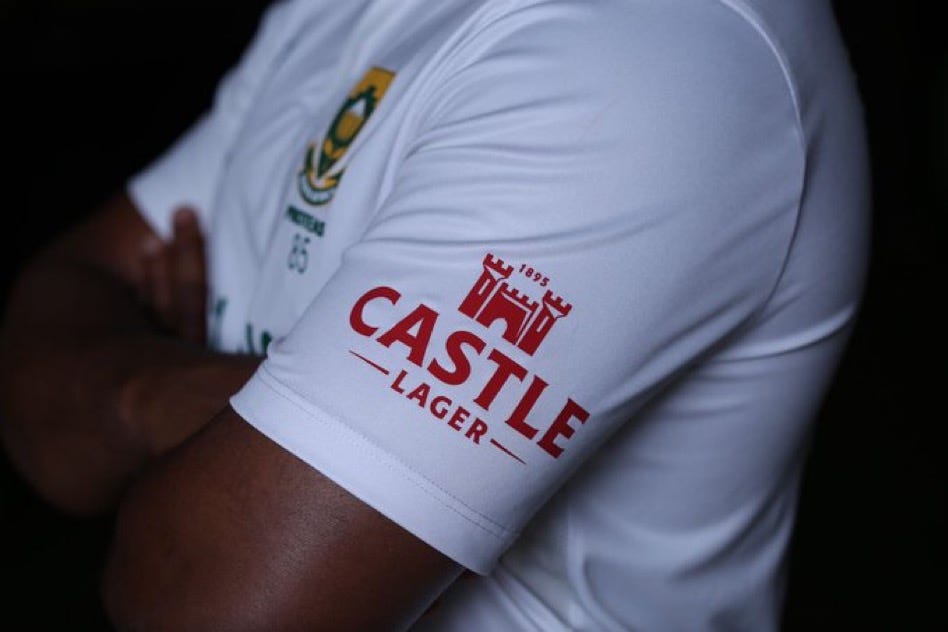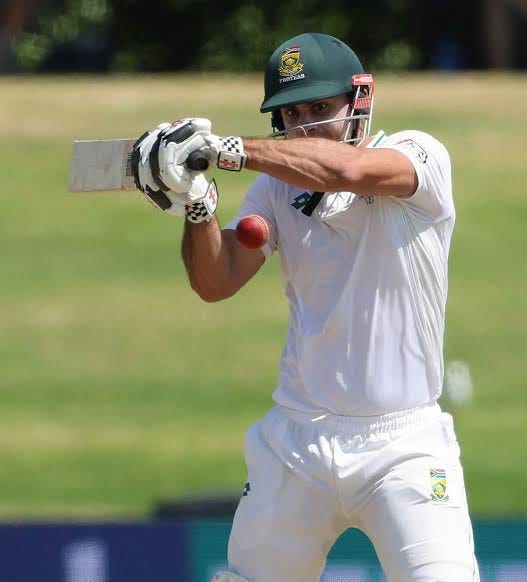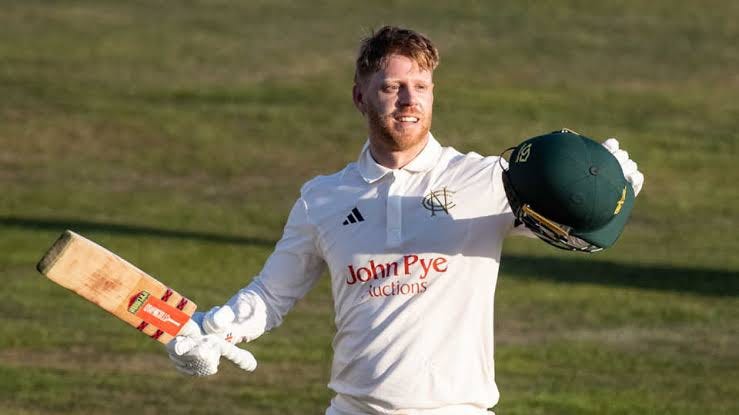There may still be over 20 days to go until the start of the World Test Championship final but that’s no reason not to be talking about it. Anyway, the IPL is in a terrible tangle with a week of meaningless matches to go before the Play-Offs. Not that… never mind.
Apologies to the very small group of cross-over readers who subscribe to this column and the Business Day – you will already have seen most of this column with your breakfast – but I thought it worth sharing again for the benefit of the MoC readers. It is also an opportunity to appeal to Test nostalgics with the news that ‘Castle Lager’ will be making a reappearance on the players’ shirt sleeves for the Test.
The popular perception is that South Africa’s likely starting XI will start as heavy underdogs to Australia at Lord’s on June 11 – even the jovially optimistic but sensibly pragmatic coach, Shukri Conrad, concedes as much. But a lack of experience, he points out, does not equate to a lack of talent.
Mitchell Starc is closing in on 400 Test wickets (382) while captain Pat Cummins (294) and Josh Hazlewood (279) are nearing 300. Statistically they are most successful fast bowling trio of all time although several West Indian triumvirates would have challenged their record if they had played more often together. And that’s before we get to Nathan Lyon, the cantankerous veteran off-spinner who has gathered 553 scalps.
It’s easy to see why sceptical pessimists believe this bowling quartet might be too much for a batting line-up without an Amla, a Kallis, an AB or a Graeme Smith. But just as a lack of experience doesn’t equal a lack of ability, neither does the lack of reputation. They take time (and many runs) to acquire.
In the absence 40 or 50 Test matches we can only measure a batter’s potential for success at the highest level by the way they have performed in domestic first-class level and an average of 40 remains the benchmark for ‘good.’ A first-class average of over 50 in a first-class career sustained for a decade is ‘very good’ bordering on excellent. South Africa has three of them pencilled to bat in the top seven at Lord’s.
Ryan Rickelton’s last Test innings yielded 259 against Pakistan at Newlands in January which boosted his Test average to over 40 in just 10 Tests but he has averaged over 50 at domestic level for over 10 years, including time in the English County Championship with Northamptonshire.
David Bedingham, too, averages over 50 in 113 first-class games, the majority of which have been played in England for Durham and Kyle Verreynne, currently playing for Nottinghamshire, averages over 50 in just short of 100 games and already has four centuries in 24 Tests, an unusually high return for a wicket keeper.
Let’s not forget that captain Temba Bavuma’s Test average is now a respectable 38 having played a critical role in the last seven Tests which his team needed to win to reach the final. Tristan Stubbs is in the infancy of his Test career having played only 26 first-class matches yet he, too, averages 46 and already has two Test centuries.
Intriguingly, all rounder Wiaan Mulder is likely to bat at number three. He has a sound defensive technique and a highly respectable first-class average of 36 considering he has also taken 196 first-class wickets at 28 apiece in 85 matches which included two highly successful seasons for Leicestershire. Yet more experience in English conditions in the Proteas squad. Mulder is not a natural number three but he must be accommodated in the starting XI for one very good reason. Swing.
Although both South Africa and Australia use the Kookaburra ball in domestic cricket, the WTC final will be played using the English Dukes ball which swings – and seams – more than the Kookaburra. Mulder is a natural swing bowler and is the perfect ally to the varied pace of Kagiso Rabada, Marco Jansen and probably Lungi Ngidi although Dane Paterson has enjoyed six consecutively successful seasons in County Cricket and is currently playing for Middlesex so knows the Lord’s conditions well.
“The Dukes ball retains its swing for much longer than the Kookaburra and doesn’t deteriorate as quickly so it’s definitely a good idea to have a bowler who shapes the ball in the air,” says former Proteas coach and bowling guru, Eric Simons. “Australia have Mitchell Starc to swing the new ball and KG can also swing it but a second swing bowler could be important.”
Keshav Maharaj may not have 500+ Test wickets but he does have 198 at an average of under 30 and it’s not just his team-mates and countrymen who rate him as a match for Lyon in a one-off Test match, in temperament as well as skill. And talking of match-ups – Rabada’s 327 Test wickets at 22 apiece makes him comfortably the equal and probably a small notch above the great Australian pace trio.
No, the Proteas are definitely not favourites. Australia are. It’s just a little irritating that so many SA supporters have bought into the narrative that Bavuma’s team is not just lucky to be there, but somehow unworthy. Stop it. It is a bloody good team and it is on its way up, unlike the Australians.
Possible SA XI: Aiden Markram, Ryan Rickelton, Wiaan Mulder, Temba Bavuma (captain), Tristan Stubbs, David Bedingham, Kyle Verreynne, Marco Jansen, Keshav Maharaj, Kagiso Rabada, Lungi Ngidi. (Tony de Zorzi, Dane Paterson, Corbin Bosch and Senuran Muthusamy complete the squad.)







A Test match between two strong opponents can turn on small moments. Either side can win, but the mace will go to the side that takes their chances.
Isn't Rabada suspended?